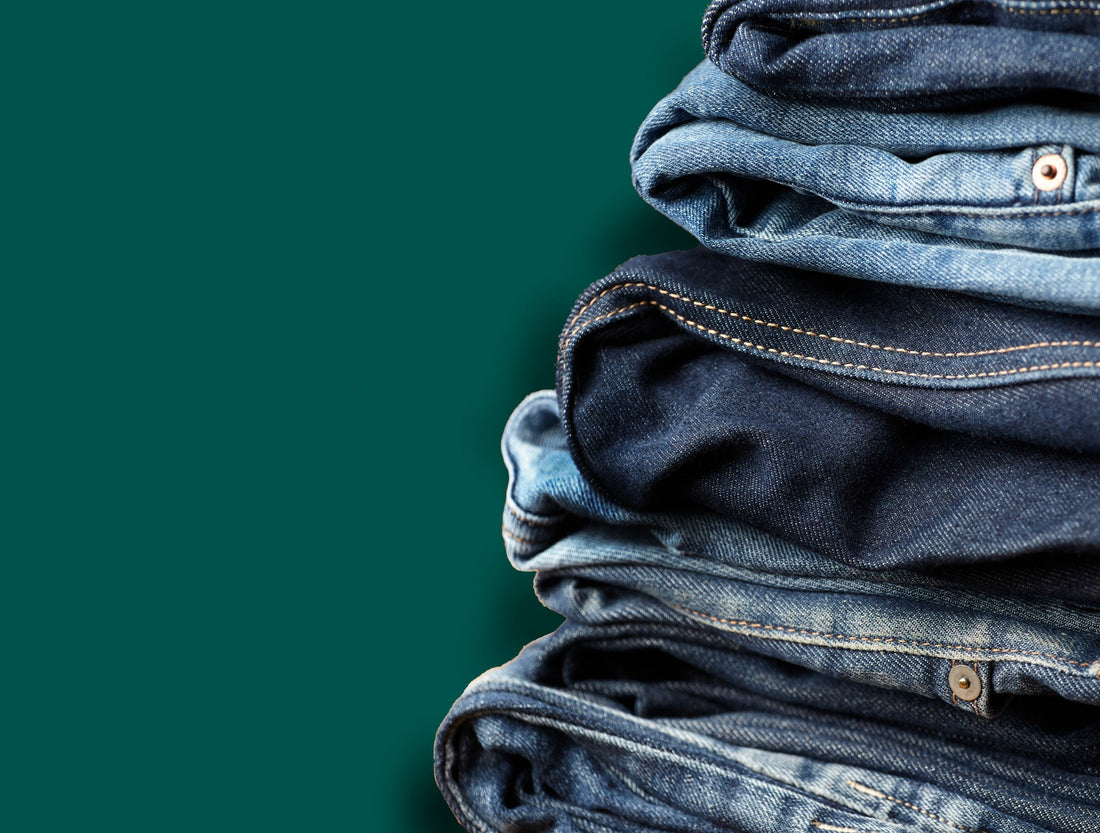
PROLONGED LIFESPAN
We cannot control the overproduction of denim garments, but we can help ensure that the clothes already produced are used and loved for as long as possible.
The denim material have the potential to be worn for many years with the help of a little care and attention. Ideally, a lifetime, if we have our say.
Denim fabric is a forgiving material to care for, as it has all the qualities needed to be lived in for a long time. Originally, denim was used as workwear due to its durable, sturdy, and coarse cotton fabric. Miners, sailors, farmers, and cowboys all valued denim for its comfort, affordability, and long-lasting properties during physically demanding work. The oldest known jeans are dated to the mid-1850s, making them well over 150 years old. That denim have the potential to be worn for many years with a little care and attention is clear. Ideally, a lifetime, if we have our say.
Our range of products is specifically made for denim fabric, with the purpose of reducing the washing of denim in households and, by doing so, extending the lifetime of denim garments. In most cases, all that is needed is spot cleaning and a bit of refreshing. Often, washing is done more by routine than necessity. Washing denim in machines should only be done when truly needed – a timing that only the wearer can decide. There is a significant difference between wearing the same pair of jeans every day, every other day, or once a week. Depending on the frequency of wear, the frequency of washing should also be adjusted. Maintaining denim with spot cleaning and antibacterial solutions can help prolong the time between washes, extending the lifespan of the fabric and helping the environment with every wash avoided.
We cannot affect or change the overproduction of denim, no matter how much we would like to. What we can do is help minimize the yearly waste of worn-out denim.
While prolonging the lifespan of denim garments is our main goal, we as manufacturers also have responsibilities towards our planet. Using valuable natural resources to produce even more products can seem counterproductive, but hear us out. The biggest issue with the denim market is the production of new garments, where every step of the manufacturing process requires toxic chemicals—from the cultivation of cotton to the processing of materials. Overproduction of denim clothing is the major culprit in this context. We cannot affect or change that, no matter how much we would like to. What we can do is help minimize the yearly waste of worn-out denim. By doing so, we hope to lessen the demand for newly produced denim, which in turn might help reduce harmful overproduction.
Our bottles are made from ghost nets—fishing nets that have been lost or abandoned in the ocean. These nets disrupt marine life, with hundreds of aquatic animals potentially trapped and killed in a single ghost net.
We hope that our choices can help ease an already strained environment. And we do hope that you choose to be a part of denim care.
All of our products are made in Europe; three out of four items are made in Sweden, and the fourth in Spain, all regulated by European laws. Every detail, from the content of the products down to the recycled packing material for shipping to end consumers, is well thought out. We hope that our choices can help ease an already strained environment. And we do hope that you choose to be a part of denim care.




